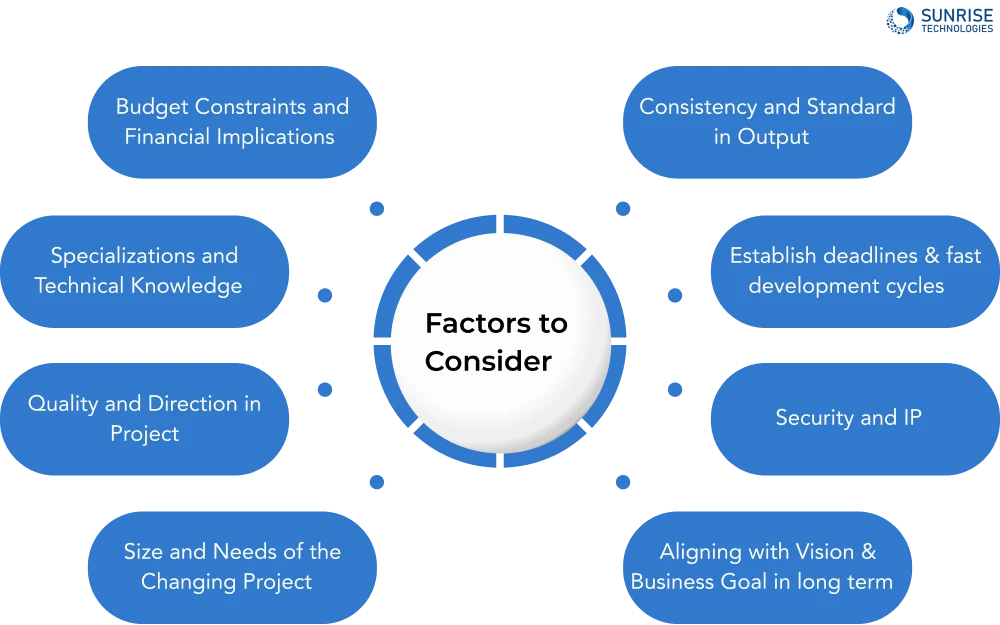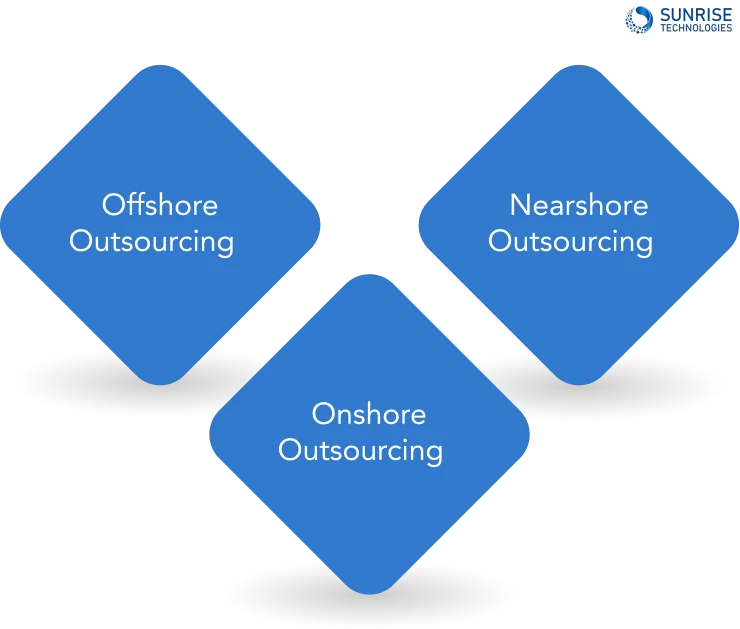
Discuss Your Development Strategy with Experts
Book a session to explore whether in-house development or outsourcing best fits your project goals.

Feb 24, 2025
So you have two choices when it comes to developing a new application for your business: do it inside the house or outsource it to any external vendor. Choosing the right approach is really a crucial decision in terms of meeting timelines and budgets. Outsourcing may hasten development; however, selecting the wrong vendor increases the possibility of costs overrunning the budget, delays in project delivery, and, worse, unforeseen problems. In-house development, on the other hand, gives you more control but would require some assets in terms of human resources. The following article provides a detailed outline of in-house vs. outsourced software development to aid in making a decision.
See how our custom software development aligns with your business needs—no strings attached.
| Factors | In-House Software Development | Outsourcing Software Development |
|---|---|---|
| Cost | Upfront costs are higher. It includes software license and salaries. Ongoing expenses for the in-house employees. Expenses include their training and benefits. | Affordable project-based billing. It includes breakdown of transparent cost. Less investment initially. Avoid hiring full-timers. |
| Control of the Project | Project having more control. Also, in the development process. Direct oversight. And, in management of the in-house team. Ability for a quick pivot. Make decisions immediately. | The development team has direct control. That is too little. It may be offshore. Or in another location. Depending on outsourcing processes. Effective collaboration and communication. |
| Expertise | Limited to the skills. Also, in the expertise of in-house team. Challenges might be faced. For finding talents. Possible for in-depth knowledge. For company’s culture and product. | Access to talented pool worldwide. It includes expertise and diverse. Ability to choose a partner. Partner with knowledge of the domain. |
| Example | Famous image editing software developed by Adobe. It is called Photoshop. It is fully in-house. | App Development of Slack was outsourced to Meta Lab. |
| Scalability | Scalability is limited. It is based on internal teams’ size. It faces challenges quickly. It adjusts the size of the team. Requirement of resource-planning. It is long-term. | High scalability with adjustment ability. Fast requirements for changing requirements. Scalable projects’ quicker time-to-market. |
| Time-to-Market | Possible for higher timelines. It is due to limitations of resources. And the delays internally. Recruitment process is time-consuming. It has unexpected internal problems. It can also cause delays. | Fast development with a team. A team who is always ready and available. Possibility for quick project completion. It is due to attentive expertise. Less risks and delays internally. |
| Responsibility and Risks | Responsible for all project outcomes. Also, risks, if any. Must manage all the issues. The issues are project related. Full accountability for the success of the project. Also, in case of failure. | Shared responsibility for project success. Ability to transfer risks to partner. For instance, talent acquisition. Less accountability individually. It is for certain project aspects. |
| Control over process | In-house development has full control. It is over the software development process. It allows for full-time personalization. It aligns with your business requirements. | Provides access to a pool of talent. They are globally talented with technical skills. Experts Collaborations from various locations. It solves problems. It also enhances innovations. |

Evaluate the financial aspects. Then compare the cost of an in-house team. Compare this with an outsourcing expense. Direct costs like salaries are included. Also, in-house software development team infrastructure. Along with that contract-based outsourcing costs.
Determine whether your organization has technical skills. Be it an important skill or providing access. Access to special talents. It is not available in-house.
Book a session to explore whether in-house development or outsourcing best fits your project goals.

Consider managerial control level. Along with that, exercising supervision. It varies between partners of in-house and outsourced.
Evaluate the ability to measure team size. Plus, adapt to changing project needs. This factor offers great flexibility in outsourcing.
Ensure that your final product meets quality standards. It can be through direct in-house control. Or it can be through established processes. It is through a team of outsources.

The impact on development speed needs consideration. Also, establish a meeting of deadlines in the market. It is done by measuring in-house team efficiency. It is measured against possible quick turnaround. That too for an outsourcing team.
Gain insights into the pros and cons of in-house vs. outsourcing tailored to your business context.
Evaluate the risk of Intellectual Property (IP) protection. It maintains data security. It is important when dealing with information. The information can be proprietary and sensitive.
Ensure that your choice matches with the organization’s objectives. The objectives need to be long-term. It can be creating internal capabilities. Or it can be grasping expertise. Expertise is needed externally for a particular project.

It involves collaborating with the software development team. They might be in a separate nation. Offshore Outsourcing is often chosen as an affordable option. It can evaluate the pool of talent.
Organizer partners with software development providers. It is in nearshore outsourcing. It can be in a neighboring country. This approach eases communication. It also facilitates cultural alignment.
It is also called domestic outsourcing. It means working with the team on software development. The team can be of the same country as the client. Higher costs might be involved. It has cultural compatibility benefits. It also offers closeness.
Receive a transparent cost breakdown for both in-house and outsourcing options.
Now you know the comparison of in-house and outsourced development. So now, you can choose on your own. By making a better decision. Make sure that your requirement matches with your decision. Requirements of your project. Be it timeline or budget. If not, it can create an impact. Impact on the efficiency of the project. Along with the costs associated with it.
You cannot choose with this comprehensive guide. Even now. Do not worry. We, Sunrise Technologies, are at your aid. We are a leading software consulting company headquartered in Australia. Whether you’re seeking expert guidance or looking to outsource your development projects, we’re here to assist you. Share your requirements with us, and our team of seasoned professionals will work closely with you to tailor the perfect solution to your needs.
Sam is a chartered professional engineer with over 15 years of extensive experience in the software technology space. Over the years, Sam has held the position of Chief Technology Consultant for tech companies both in Australia and abroad before establishing his own software consulting firm in Sydney, Australia. In his current role, he manages a large team of developers and engineers across Australia and internationally, dedicated to delivering the best in software technology.
In-house teams give you control, but outsourcing is faster, more cost-effective, and gives access to senior-level talent. Sunrise Technologies provides dedicated SaaS development teams with proven frameworks, helping Australian startups launch efficiently without long-term overheads.




Cloud Based Project Management Platform
Read the challenges we faced and how we helped
View Case StudyYou cannot copy content of this page
Book a personalized demo to discover how our software products have helped 200+ customers streamline operations and enhance efficiency.
Have questions about software development process? Join us for a complimentary consultation.
Get Premium app development at a price that fits your budget. Discover flexible pricing options designed to meet your needs.
